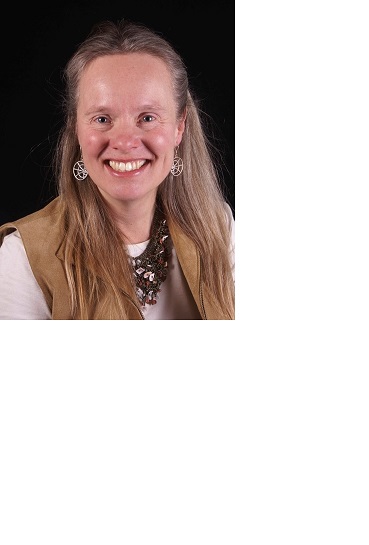Arcs and sparks - finding fault on live wires
Distinguished Speaker of Antennas and Propagation Society Prof. Cynthia M. Furse - talks about "Arcs and sparks - finding fault on live wires"
| |
Abstract: Aging electrical wiring has been identified as an area of critical national and international concern. Faults in aircraft wiring have been implicated in a number of severe aircraft incidents including the TWA800 and SwissAir111 crashes. Electrical wiring is the number one cause of home and building fires, and is responsible for numerous incidents in consumer product safety, photovoltaic systems, vehicular safety/reliability, safety of nuclear facilities, reliability of power distribution systems and communication systems, and others.
What could possibly be so hard about finding these electrical faults? This lecture describes the real-world challenges in electrical systems – live signals, switching systems, grounding and moisture, vibration, and more. We’ll talk about how electromagnetics, signal processing, artificial intelligence, chip and hardware design all merge to create new sensors that can detect and locate faults in critical systems. In particular, I’ll describe the development and use of spread spectrum time domain reflectometry (SSTDR) for finding faults on live electrical systems. Using a tiny pseudo-noise (PN) code similar to your cell phone or GPS signal, SSTDR hides within the noise margin of existing signals, enabling continuous monitoring and location of very hard-to-find intermittent faults. And along with SSTDR came a very broad family of broadband reflectometry systems and algorithms for analysis of the reflection signatures, which we’ll discuss.
Along with the technical journey, I’ll also describe my entrepreneurship journey as we took this exciting research off the bench and into the real world. Today SSTDR is used in aircraft manufacturing, handheld electrical testing, undersea cable testing, and has recently been approved for installation on Network Rail systems (UK). But our work is not done. Electrical systems are complex and varied, and some very gnarly problems remain. I’ll share a vision for the future, and some ideas about what it will take to get there.
Date and Time
Location
Hosts
Registration
-
 Add Event to Calendar
Add Event to Calendar
- Contact Event Hosts
-
Raghunandan@ieee.org
Frank.Feather@Nokia.com
- Co-sponsored by Frank Feather, Chair, PE 31 - Power and Energy Society chapter, NJ coast section
Speakers
 Cynthia Furse of University of Utah, Department of Electrical and Computer Engineering
Cynthia Furse of University of Utah, Department of Electrical and Computer Engineering
Arcs and sparks - finding fault on live wires"
Aging electrical wiring has been identified as an area of critical national and international concern. Faults in aircraft wiring have been implicated in a number of severe aircraft incidents including the TWA800 and SwissAir111 crashes. Electrical wiring is the number one cause of home and building fires, and is responsible for numerous incidents in consumer product safety, photovoltaic systems, vehicular safety/reliability, safety of nuclear facilities, reliability of power distribution systems and communication systems, and others.
What could possibly be so hard about finding these electrical faults? This lecture describes the real-world challenges in electrical systems – live signals, switching systems, grounding and moisture, vibration, and more. We’ll talk about how electromagnetics, signal processing, artificial intelligence, chip and hardware design all merge to create new sensors that can detect and locate faults in critical systems. In particular, I’ll describe the development and use of spread spectrum time domain reflectometry (SSTDR) for finding faults on live electrical systems. Using a tiny pseudo-noise (PN) code similar to your cell phone or GPS signal, SSTDR hides within the noise margin of existing signals, enabling continuous monitoring and location of very hard-to-find intermittent faults. And along with SSTDR came a very broad family of broadband reflectometry systems and algorithms for analysis of the reflection signatures, which we’ll discuss.
Along with the technical journey, I’ll also describe my entrepreneurship journey as we took this exciting research off the bench and into the real world. Today SSTDR is used in aircraft manufacturing, handheld electrical testing, undersea cable testing, and has recently been approved for installation on Network Rail systems (UK). But our work is not done. Electrical systems are complex and varied, and some very gnarly problems remain. I’ll share a vision for the future, and some ideas about what it will take to get there.
Biography:
|
Dr. Cynthia M. Furse is a Fellow of the IEEE and the National Academy of Inventors, and is a Professor of Electrical and Computer Engineering at the University of Utah, Salt Lake City, Utah, USA. Her research interests are the application of electromagnetics to sensing and communication in complex lossy scattering media such as the human body, geophysical prospecting, ionospheric plasma, and complex wiring networks. Dr. Furse is a founder of LiveWire Innovation, Inc., a spin-off company from her research, commercializing devices to locate intermittent faults on live wires. She has taught electromagnetics, wireless communication, computational electromagnetics, microwave engineering, antenna design, introductory electrical engineering, and engineering entrepreneurship and has been a leader in the development of the flipped classroom. Dr. Furse is an Associate Editor for the Transactions on Antennas and Propagation (AP), a member of the IEEE AP Young Professionals Committee, a past Administrative Committee member for the IEEE AP society, and past chair of the IEEE AP Education Committee. She has received numerous teaching and research awards including the 2020 IEEE Chen To Tai Distinguished Educator Award. |
Email:
Address:University of Utah 50 S Central Campus Dr. , , Salt Lake City, Utah, United States, 84108
Agenda
Log in to Webex: 5.45pm, Checks and introducing speaker: 5.50 - 6.00pm
6.00 to 6.45pm Talk "Arch and Sparkss - finding fault on live wires"
6.45pm - 7.00pm Question and Answers. Vote of thanks.
Evening online lecture

